Unpacking Design Thinking Futures: GK VanPatter in conversation with Rafiq Elmansy Part 1
Design is now taking broader perspective than before. It’s now used by large companies such as Google, Apple, IKEA, Nike, and others as a strategic and business tool to lead business to a new innovative level. Design thinking is widely used by various companies to achieve business advantages such as innovation, market competitiveness, and profitability.
Over the course of understand the present and future state of design thinking, we plan number of interviews with design thinking leaders in order to uncover how do they see design thinking and how it can be used to change the future of design.
I got the chance to discuss with GK VanPatter, co-founder of NextDesign Leadership Institute and Humantific, different topic related to design thinking and its future. In this article, we’ll explore the first part of this interview.
1- Rafiq Elmansy: Thank you so much GK for accepting to share your experience and thoughts with Designorate’s readers. Tell a little bit about your experience and journey?
GK VanPatter: Hello Rafiq. Thanks for your interest in our Humantific work. Happy to do this. My journey?…OK. I have been around the block a few times, had several different career paths and have seen numerous cycles of the global economy come and go. I think the part of my professional journey that is most relevant for your readers here is that I was, for better or worse, educated in design schools and worked early on in multidisciplinary design consultancies. Those firms assembled many disciplines; architecture, industrial design, communication design, experience design, product design, interaction design, information design and others. As I advanced in my career and became responsible for increasingly complex projects and cross-disciplinary teams I became interested in skills and tools applicable for this context.
Working in such firms I had the advantage of being able to look across many disciplines and could see that some of what I was in search of regarding leadership could not be found in the traditional design disciplines. It was in those early years that I began and became familiar with the orientation of looking outside the design communities for additional knowledge.
It was then that I learned of the CPS (Creative Problem Solving) community and other communities of practice, parallel universes, where much process knowledge related to the cross-disciplinary team context already existed in ways that was often quite different from traditional notions of design. Thus I began the onboarding of what we now refer to as hybrid skills and tools.
Along the way, I also learned of what was then called the understanding business and began working with Richard Wurman (founder of TED) and Donovan & Green a multi-disciplinary firm here in New York very focused at that time on information architecture and experience design. It wasn’t really until I found this understanding business, ie: sense-making that I felt like I had found the home. This is a common feeling for designerly folks who discover that they are natural born sense-makers and that there is something called the sense-making business. There is a strong good feeling of arriving home!
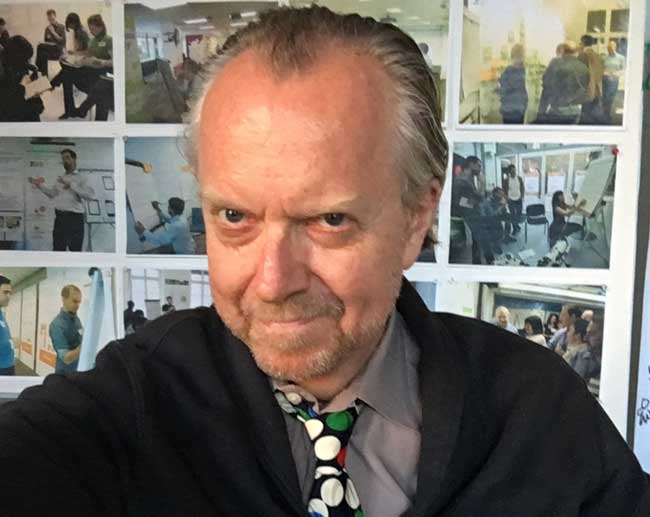
Early on in the dot-com era my colleague Elizabeth Pastor and I had already made the connection between information and innovation. We were already presenting at conferences on this topic. Early in that era, MarchFirst acquired Donovan & Green in a quest to deepen their experience design and information design knowledge.
For most of that era, Elizabeth Pastor was at Scient. I was on the leadership team there, the first design person. Elizabeth and I created the Innovation Acceleration Labs, the innovation skill-building programs and the strategy of inclusion at Scient that was so near and dear to the culture. As part of the strategy every person at Scient, regardless of position, went through a common cross-disciplinary skill-building experience as part of orientation. Eventually, this amounted to training several thousand people and included numerous client teams as well.
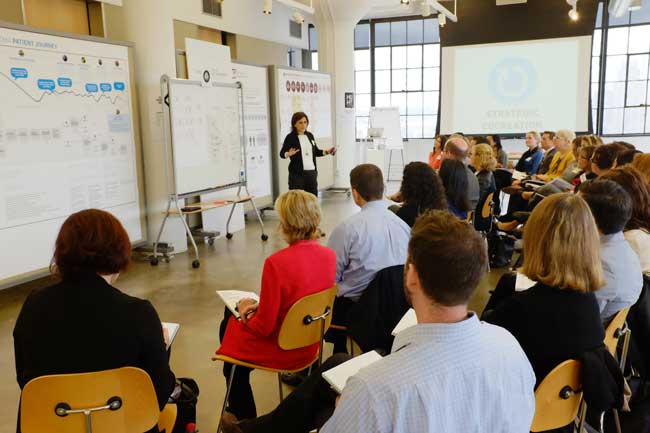
We learned a tremendous amount from that experience before launching Humantific in 2002. At the core of what we do is always the question of how sense-making and change-making fit together. Today we share what we have figured out working with organizational leaders who also have an interest in these subjects often related to their corporate strategic objectives. The interest in both subjects: sensemaking and change-making continue to rise and rise among organizational leaders both in the private and public sectors. The need to drive change is enduring and the need for sensemaking typically precedes it. We are happy to help with both.
2- Rafiq Elmansy: You are also the co-founder of the NextD Leadership Academy in New York. How do you see the design leadership in the context of the business ecosystem today?
GK VanPatter: Some years ago we created the NextDesign Leadership initiative as a sharable community sense-making project outside our consultancy. As part of NextD Journal, we undertook a series of thought leader interviews that we hoped would authentically shed some light on the existing conditions of graduate design education and related challenges. NextD Journal has been cited as creating a new, more deeper form of design journalism and was ahead of its time as we began pointing out the need for more strategic design process skills in 2005.
After many interviews, we created the NextD Geographies framework to aid in the understanding of how the design was changing from a challenge scale and methods perspective. We have written in detail elsewhere about how this framework was created and why. (See Innovation Methods Mapping: De-mystifying 80+ Years of Innovation Process Design)
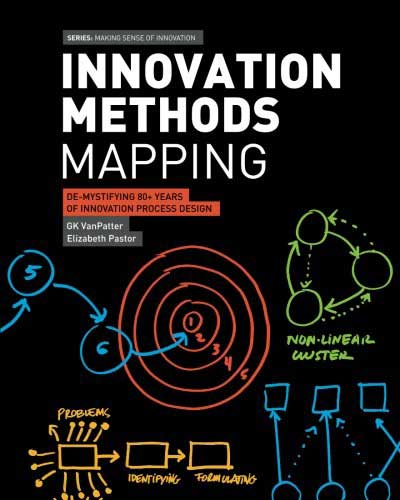
You see us using the framework of Design 1,2,3,4 in virtually every conversation on the subject that we participate in. Without such a framework design conversations tend to be circular and rather meaningless. Among other things, it brought to light the notion that a design leader in Design 1 does not likely process the leadership skills of Design 3 or Design 4. This rather simple notion, startling to some in the design community, became known as Skill-to-Scale and is an entire topic for another day!
Many thousands of viewers have accessed that material in the NextD Futures Library that now exists on Issuu.
Once you understand the NextD Geographies picture it is not difficult to see how the relationship between design and what you refer to as the “business ecosystem” is changing, indeed has already changed. In the big picture sense design will need to change to stay in sync with or ahead of the many changes occurring in the real world and not just in service to the “business ecosystem”.
Our concern regarding the state of graduate design leadership education that we began expressing in 2005 has morphed several times since then but it largely remains as the impact of widespread adoption of design thinking has overtaken the meager strategies of many graduate design schools.
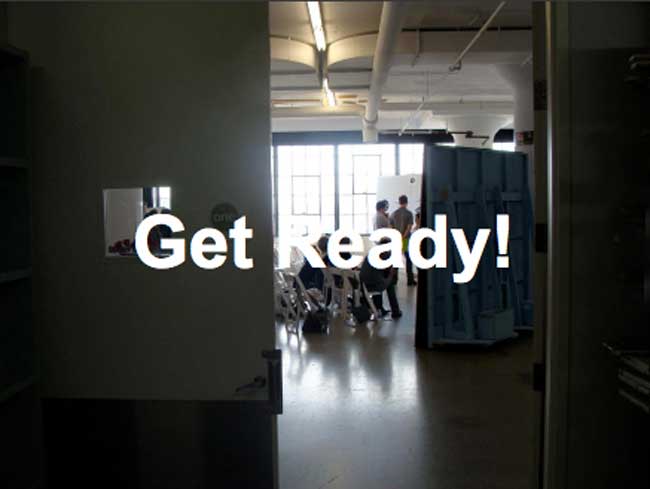
An elephant presently in the graduate design education living room is that while the design thinking wave became a driver of change in the business community and business education community it has had an odd opposite effect on the design education community itself. Problem surfacing and acknowledgment were difficult enough in that community before the wave. Unfortunately, the celebratory rise of interest in design thinking has in large measure served as a blockage to recognition and acknowledgment of the need for significant methodology and skill-building change within the graduate design education community.
There is a growing fire hose of graduates from very high profile graduate design schools and the vast majority hold downstream assumption based skills. Regardless of the fanfare, there seems to be very little skill-building going on in the graduate design schools past Design 2.0 while the business schools are gearing their graduates up to own Design 3.0 (organizational transformation) in particular.
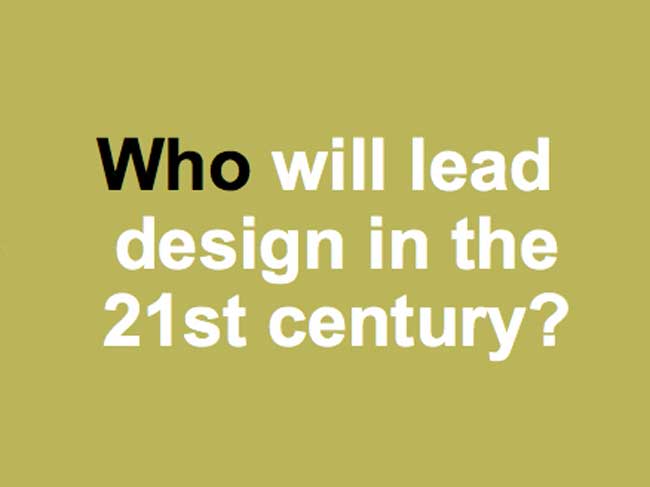
Certainly, many strategic design practice leaders who are actively looking for new talent are aware of the need for change as well as the opportunity. Practice leaders can play a role in this future by engaging and articulating beyond just parroting the promotional approaches of the graduate design schools.
Stepping into that void, not waiting around for the academic community to adapt, numerous leading practices have researched, designed and launched their own skill-building programs that better reflect the innovation needs to be seen in the real world today. Some of those programs have existed for more than a decade.
3- Rafiq Elmansy: In one of your articles, MAKING SENSE OF: “Why Design Thinking Will Fail,” you classified the design thinking into upstream and downstream design thinking. Can you clarify this taxonomy for our readers?
GK VanPatter: Yes certainly. We see a lot of articles online like the now infamous “Why Design Thinking Will Fail” post that you referred to. Our response, posted to LinkedIn contains a reference to the situation that I just referred to above. The impact of the methodology mess that now exists becomes clear in that article. (See link below.)
Regarding upstream and downstream, we created this distinction as one part of a larger taxonomy while researching and writing our recently published book Innovation Methods Mapping to convey important differences in methodologies. In the book, readers can see and make use of the entire taxonomy as a reusable analysis framework. Our goal in creating the analysis lens is not jargon-making but rather to introduce considerations and meaning not previously present.
The terms upstream and downstream relate to the assumed starting points of the methodology. Upstream means upstream from the “brief”, which is a framed or semi-framed challenge. In upstream contexts, one cannot and does not assume to know what the challenges actually might be. Part of the work is to create the interconnected constellation of challenges, often seen for the first time. The everyday context for upstream is complex organizations and societies where many types of challenges tend to exist. Why would anyone assume all challenges on the planet are product or service related? From our open innovation perspective that makes no sense at all.
Downstream is the brief business where much of the traditional design industries (and graduate design schools) have been focused for decades. Most often in downstream methods, the assumption is that the challenge to be addressed is pre-assumed to be related to product, service or experience design regardless of what the challenges actually might be.
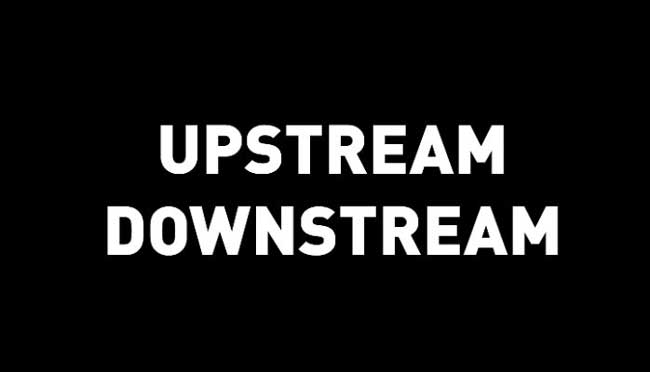
Both upstream and downstream methods are useful. The problems arise when downstream methods are force-fitted into upstream contexts. Today in a competitive marketplace, whether we all like it or not, many graduate design schools are, due to their slow adaptation over a decade, out pitching the quick-fix notion that down is up, that downstream methods are universal, that downstream methods are meta design. That is more about marketing than methodologies. This spin pitching has contributed, not to the making sense of the subject, but rather to the mountain of confusion that now exists and continues to grow. Ultimately that spin will likely undermine the credibility of those advocates, but hopefully not the subject and the interest in adaptive skills.
What we find is that the methodology related sensemaking that we do is welcomed by many and not appreciated by some who would prefer that these differences not be pointed out. Not everyone is going to be a fan of more clarity around the subject of design/design thinking. So be it.
4- Rafiq Elmansy: How do you see the current design education especially in the US? How does it meet the current and future role of design in business?
GK VanPatter: There are some great things going on in graduate design education in the US and elsewhere. Globally we are at Humantific, involved in several exciting initiatives ourselves, primarily partnering in Europe. In terms of the design education opportunity space it remains vast, however, as stated above, overall I am guessing that 90% of the graduate design schools globally are still exclusively focused on teaching downstream skills of product, service and experience design, often being creatively reframed now as social innovation, design thinking, etc. The program names and the marketing materials seem to change more so than the actual methods. Often schools are telling their young students that the downstream skills of product, service and experience design are somehow magically universally applicable to upstream contexts. As practice leaders, we are not fans of that approach but we often encounter it when interviewing indoctrinated candidates from the various graduate design schools.
Currently, much of design education is geared to roles that are downstream from the strategic figuring out of what the challenges and opportunities are facing organizations. Often after that upstream work has been determined by others the design teams are called in. That old school dynamic suits the MBA type folks eager to step up and do this upstream work but it undercuts the potential of design and certainly, the future of design is diminished by not challenging this rather common dynamic. Unfortunately, many of the graduate design schools seem to be training folks to work for Rotman graduates rather than work in the room as equals. We would like to see the graduate design schools raise the bar in this regard but this takes more than marketing spin. There is a need for more designerly educated folks geared up and capable of stepping in to contribute and lead in upstream contexts, which typically involve multiple disciplines.
If you or your readers know of any graduate design school teaching upstream skills (not product, service or experience design) applicable in the context of organizations and societies we would love to hear about it. We would be happy to take a look from a methodology perspective. We have offered our input to any graduate school that has a faculty brave enough to invite this kind of outside input.
5- Rafiq Elmansy: Many articles try to address the design thinking topic. How do you define the term design thinking? And what value can it bring to companies?
GK VanPatter: Happy to share our definitions here with your Designorate readers:
UPSTREAM:
DESIGN THINKING [Also known as Meta Design Thinking, Strategic Design Thinking and Adaptable Inquiry]
Key Words: Upstream, meta, iterative, human-centered, empathetic, nonlinear, creating, optimizing, insight creation, design research, data/information fueled, visual sensemaking, challenge framing, focus on right challenge, acceleration, adaptive, inclusive.
1 Is a meta, iterative, nonlinear, holistic, human-centered innovation process.
2 Oriented towards multiple participants, cross-disciplinary cocreation.
3 Begins with no preconceived assumptions regarding what the challenges, and opportunities are.
4 Begins upstream in Opportunity Challenge Definition Phase.
5 Begins with a fuzzy situation to be de-fuzzed.
6 Contains empathetic research insight creation that informs challenge framing and opportunities for change-making.
7 Recognizes that a constellation of diverse challenges likely exists simultaneously that can be visually mapped.
8 Contains a high degree of empathetic visual sensemaking that shapes insights for accelerated digestion by all participants.
9 Contains the surfacing and orchestration of participant innovation behaviors.
10 Contains the surfacing and orchestration of participant cognitive thinking style preferences.
11 Like a Swiss army knife is adaptive to various challenge types found in organizational and societal contexts.
12 Serves as human-centered, adaptive toolkit/skill-set in the pursuit of the organizational adaptive capacity building.
DOWNSTREAM:
PRODUCT/SERVICE/EXPERIENCE DESIGN THINKING
Key Words: Downstream, situational, iterative, human-centered, empathetic, nonlinear, insight creation, sensemaking, acceleration, creating, optimizing, products, services, experiences.
1 Is a situational, iterative, nonlinear, holistic product/service/experience creation process.
2 Oriented towards a project team, or teams creating products/services/experiences.
3 Begins with preconceived assumptions that the challenges or opportunities are product/service/experience related and will be outcomes.
4 Begins downstream in product/service/experience Opportunity Challenge Definition Phase.
5 Most often begins with a predefined product/service/experience brief.
6 Contains empathetic research focused on insight creation that informs the creation of products/services/experiences.
7 Recognizes product/service/experience challenges.
8 Might contain a high degree of empathetic visual sensemaking that shapes insights for accelerated digestion by all participants.
9 Most often contains no surfacing or orchestration of innovation behaviors.
10 Most often contains no surfacing and orchestration of cognitive thinking style preferences.
11 Like a hammer, screwdriver, and wrench. Each applicable situationally to product, service or experience challenges.
12 Can serve as a useful toolkit/skill-set in the pursuit of product/service/experience creation capacity building.
AGILE METHOD
Key Words: Downstream, situational, iterative, nonlinear, efficiency, abbreviated work cycles, accelerated, repetition, incremental, inspect & adapt, optimizing, build software product iteratively, reduce time to market.
1 Is a situational, iterative, nonlinear software/product improvement/implementation process.
2 Oriented towards multiple project teams iteratively creating/tweaking software.
3 Begins with preconceived assumptions that the challenges or opportunities are software/product related and will be outcomes. “Define Requirements” in “Agile” typically means within the context of the assumption that software is needed and will be the outcome.
4 Begins downstream in product Ideas/Implementation Phase.
5 Begins with multiple product/software ideas.
6 Recognizes a revolving stream of functionality ideas that will be actionized iteratively.
7 Often contains little or no deep empathetic research insight creation that informs tweaks to the software.
8 Often contains little or no empathetic sensemaking that shapes insights for accelerated digestion by all participants.
9 Typically does not contain the surfacing and orchestration of participant innovation behaviors.
10 Typically does not contain the surfacing and orchestration of participant cognitive thinking style preferences.
11 Like a hammer. Applicable to software product challenges.
12 Serves as toolkit/skill-set in the pursuit of organizational capacity to assess the direction of software while it’s being developed.
The value of design has many faces to it depending on which design you are referring to. Generally speaking, the design is future oriented in the sense that it takes place against a set of existing conditions that are hopefully improved upon in human centered ways. The intention of design skill at the scale of organizations and societies is to aid adaptability in human-centered or life-centered ways. This has not been the traditional focus of a business or many other disciplines.
Many other disciplines are in the problem solving and change making business but most are not deeply human centered in their orientation as design/design thinking intends to be.
Of course, some of this change-making design activity generates revenue for business organizations and some might not. The design is broader than the service of business but the underlying goal is always to make the world a better, more human centered, more life centered place.
Thank you so much! This is very helpful. This is the end of part one in our interview with GK VanPatter and in the net article, we will cover the second part which will include his thoughts about the role of design thinking inside the organization, how he sees design in the net decade, and what is his advice to design students.







GK said; “If you or your readers know of any graduate design school teaching upstream skills (not product, service or experience design) applicable in the context of organizations and societies we would love to hear about it. We would be happy to take a look from a methodology perspective. We have offered our input to any graduate school that has a faculty brave enough to invite this kind of outside input.”
What graduate design schools have already been vetted, specifically?
Thanks for yoru comment and sorry for the delay reply. When we teach design or design thinking in university, we usually start with our students with a pre-defined problem that need to be addressed. However, I believe GK would like to see examples of schools that present the upstream design thinking when the start point is a fuzzy situation without a pre-defined problem to solve. Do you have any examples? Thanks! Rafiq
Rafiq – The best example of a school which teaches what GK calls upstream design thinking is the Hasso Plattner Institute of Design at Stanford, also known as the d.school. I saw an example of this in the summer of 2014 when I attended a five day seminar for K-12 teachers. Rather than being given a pre-defined problem to solve, small groups were sent out onto campus to look for problems.
This is a subtle but significant point because it highlights the importance of being “other-centered” – as opposed to self-centered – in the process. As designers/problem solvers/learners we often stumble because we start to focus on what *we* think the problem is (reframing it in our own view) rather than focusing our skills on discovering and solving the user/customer’s problems.
GK is fond of stating that the field of Design Thinking is a confusing mess and that there are no schools doing what he calls upstream. The material in his book also doesn’t present the Stanford/d.school model accurately. He clearly believes that his company, Humantific, has the solution to that problem.
Rafiq – Here’s another way to frame what Design Thinking may be; A common theme about DT is that it exists at the intersection of Art, Technology and Business. That is also expressed as Desirability Feasibility and Sustainability. There is another field; psychology, which suggests that something else exists at the intersection of feelings, thoughts and actions. They call it Cognitive Behavioral Therapy and the method is used to resolve some of the most ambiguous and complex problems of the human psyche. Merging the views of those two fields reveals another parallel; education. From that, I suggest that DT is fundamentally a highly effective method to learn by feeling, thinking and doing your way to the solutions.